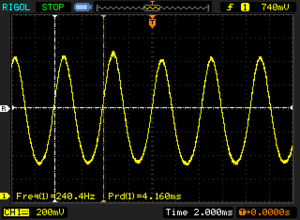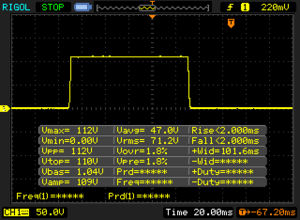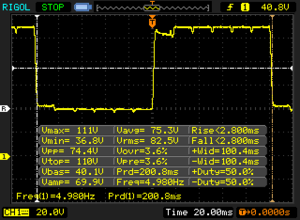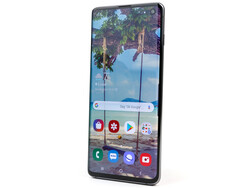Breve Análise do Smartphone Samsung Galaxy S10
Os Top 10
» Os Top 10 Portáteis Multimídia
» Os Top 10 Portáteis de Jogos
» Os Top 10 Portáteis Leves para Jogos
» Os Top 10 Portáteis Acessíveis de Escritório/Empresariais
» Os Top 10 Portáteis Premium de Escritório/Empresariais
» Os Top 10 dos Portáteis Workstation
» Os Top 10 Subportáteis
» Os Top 10 Ultrabooks
» Os Top 10 Conversíveis
» Os Top 10 Tablets
» Os Top 10 Smartphones
» A melhores Telas de Portáteis Analisadas Pela Notebookcheck
» Top 10 dos portáteis abaixo dos 500 Euros da Notebookcheck
» Top 10 dos Portáteis abaixo dos 300 Euros
| |||||||||||||||||||||||||
iluminação: 98 %
iluminação com acumulador: 701 cd/m²
Contraste: ∞:1 (Preto: 0 cd/m²)
ΔE ColorChecker Calman: 3.7 | ∀{0.5-29.43 Ø4.78}
ΔE Greyscale Calman: 1.4 | ∀{0.09-98 Ø5}
98.1% sRGB (Calman 2D)
Gamma: 2.1
CCT: 6553 K
| Samsung Galaxy S10 OLED, 3040x1440, 6.1" | Samsung Galaxy S9 Super AMOLED, 2960x1440, 5.8" | Apple iPhone XS OLED, 2436x1125, 5.8" | OnePlus 6T Optic AMOLED, 2340x1080, 6.4" | LG V40 ThinQ OLED, 3120x1440, 6.4" | Sony Xperia XZ3 OLED, 2880x1440, 6" | Huawei P20 Pro OLED, 2240x1080, 6.1" | |
|---|---|---|---|---|---|---|---|
| Screen | 10% | 12% | -5% | 4% | -62% | 15% | |
| Brightness middle (cd/m²) | 701 | 529 -25% | 639 -9% | 437 -38% | 567 -19% | 543 -23% | 569 -19% |
| Brightness (cd/m²) | 705 | 527 -25% | 637 -10% | 442 -37% | 559 -21% | 542 -23% | 578 -18% |
| Brightness Distribution (%) | 98 | 96 -2% | 94 -4% | 95 -3% | 89 -9% | 92 -6% | 95 -3% |
| Black Level * (cd/m²) | |||||||
| Colorchecker dE 2000 * | 3.7 | 1.4 62% | 1 73% | 2.21 40% | 3.3 11% | 6.6 -78% | 1.3 65% |
| Colorchecker dE 2000 max. * | 10.3 | 4 61% | 2.2 79% | 4.27 59% | 6.1 41% | 11 -7% | 2.1 80% |
| Greyscale dE 2000 * | 1.4 | 1.6 -14% | 2.2 -57% | 2.1 -50% | 1.1 21% | 4.7 -236% | 1.6 -14% |
| Gamma | 2.1 105% | 2.16 102% | 1.9 116% | 2.307 95% | 2.46 89% | 1.835 120% | 2.31 95% |
| CCT | 6553 99% | 6358 102% | 6364 102% | 6353 102% | 6495 100% | 6817 95% | 6401 102% |
* ... menor é melhor
Cintilação da tela / PWM (modulação por largura de pulso)
| Tela tremeluzindo/PWM detectado | 240.4 Hz | ≤ 99 % configuração de brilho | |
A luz de fundo da tela pisca em 240.4 Hz (pior caso, por exemplo, utilizando PWM) Cintilação detectada em uma configuração de brilho de 99 % e abaixo. Não deve haver cintilação ou PWM acima desta configuração de brilho. A frequência de 240.4 Hz é relativamente baixa, portanto, usuários sensíveis provavelmente notarão cintilação e sentirão fadiga ocular na configuração de brilho indicada e abaixo. [pwm_comparison] Em comparação: 53 % de todos os dispositivos testados não usam PWM para escurecer a tela. Se PWM foi detectado, uma média de 8101 (mínimo: 5 - máximo: 343500) Hz foi medida. | |||
Exibir tempos de resposta
| ↔ Tempo de resposta preto para branco | ||
|---|---|---|
| 4 ms ... ascensão ↗ e queda ↘ combinadas | ↗ 2 ms ascensão | |
| ↘ 2 ms queda | ||
| A tela mostra taxas de resposta muito rápidas em nossos testes e deve ser muito adequada para jogos em ritmo acelerado. Em comparação, todos os dispositivos testados variam de 0.1 (mínimo) a 240 (máximo) ms. » 15 % de todos os dispositivos são melhores. Isso significa que o tempo de resposta medido é melhor que a média de todos os dispositivos testados (20.2 ms). | ||
| ↔ Tempo de resposta 50% cinza a 80% cinza | ||
| 5.6 ms ... ascensão ↗ e queda ↘ combinadas | ↗ 2.8 ms ascensão | |
| ↘ 2.8 ms queda | ||
| A tela mostra taxas de resposta muito rápidas em nossos testes e deve ser muito adequada para jogos em ritmo acelerado. Em comparação, todos os dispositivos testados variam de 0.165 (mínimo) a 636 (máximo) ms. » 17 % de todos os dispositivos são melhores. Isso significa que o tempo de resposta medido é melhor que a média de todos os dispositivos testados (31.6 ms). | ||
| desligado | |
| Ocioso | |
| Carga |
|
Key:
min: | |
| Samsung Galaxy S10 3400 mAh | Samsung Galaxy S9 3000 mAh | Apple iPhone XS 2658 mAh | Huawei P20 Pro 4000 mAh | Xiaomi Mi 9 3300 mAh | LG V40 ThinQ 3300 mAh | Sony Xperia XZ3 3300 mAh | Média Samsung Exynos 9820 | Média da turma Smartphone | |
|---|---|---|---|---|---|---|---|---|---|
| Power Consumption | 24% | -0% | 10% | 5% | -5% | 2% | -11% | -24% | |
| Idle Minimum * (Watt) | 0.61 | 0.65 -7% | 0.95 -56% | 0.84 -38% | 0.67 -10% | 0.87 -43% | 0.8 -31% | 0.65 ? -7% | 0.842 ? -38% |
| Idle Average * (Watt) | 1.27 | 0.81 36% | 1.34 -6% | 1.54 -21% | 1.26 1% | 1.39 -9% | 1.2 6% | 1.455 ? -15% | 1.439 ? -13% |
| Idle Maximum * (Watt) | 1.3 | 0.92 29% | 1.48 -14% | 1.57 -21% | 1.29 1% | 1.41 -8% | 1.5 -15% | 1.675 ? -29% | 1.624 ? -25% |
| Load Average * (Watt) | 6.17 | 4.76 23% | 4 35% | 2.47 60% | 3.71 40% | 3.96 36% | 4.8 22% | 5.88 ? 5% | 7.03 ? -14% |
| Load Maximum * (Watt) | 8.55 | 5.16 40% | 5.13 40% | 2.49 71% | 9.3 -9% | 8.6 -1% | 6.2 27% | 9.44 ? -10% | 11.3 ? -32% |
* ... menor é melhor
Initial Verdict
O Samsung Galaxy S10 apresenta-se como um smartphone topo de gama completo e forte. Além disso, nossa unidade de análise não tem nenhum problema de consumo de energia do qual nosso Galaxy S10+ sofreu, então o S10 deve ter uma duração de bateria melhor do que seu irmão maior, pelo menos por enquanto.
O S10 também tem as mesmas câmeras traseiras do S10+, embora esteja faltando a segunda câmera frontal que do último, por isso as selfies podem ser um pouco piores. O S10 e o S10+ compartilham quase todo o mesmo hardware, por isso será interessante ver se a carcaça menor consegue manter o Exynos 9820 fresco sob uso intenso sustentado.
Se você preferir um smartphone compacto, não precisa de 1 TB de armazenamento interno e está considerando uma das séries S10, então o Galaxy S10 pode ser uma melhor alternativa do que o S10+. After all, you can save €350 with almost no compromises.








